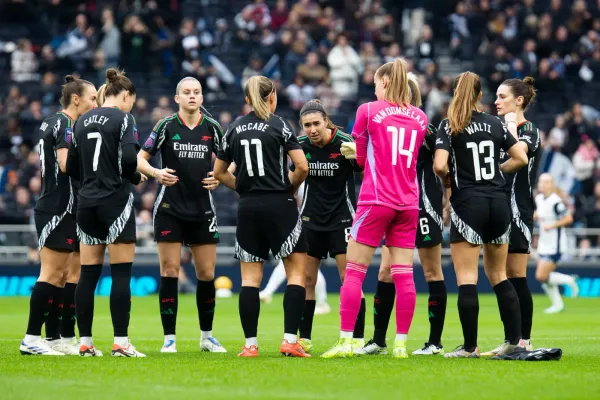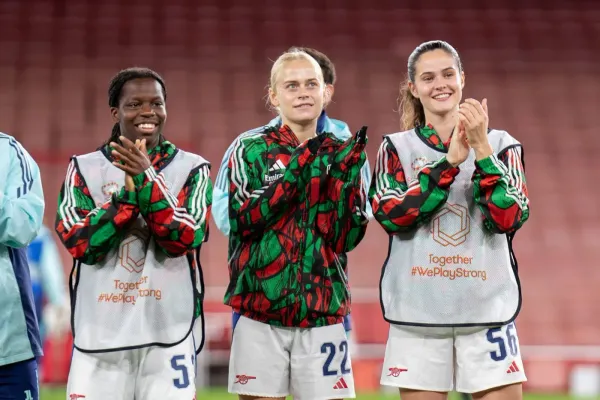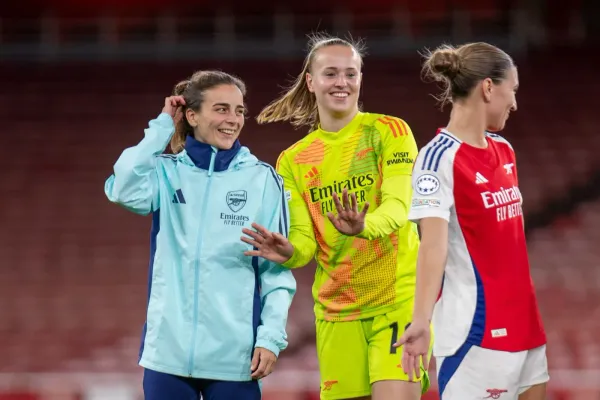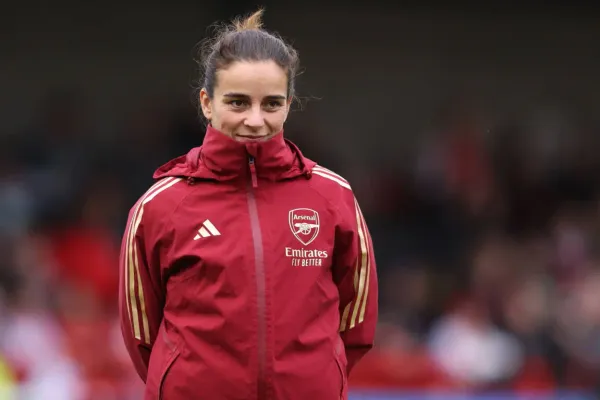October mailbag
Answering (or trying to answer) your questions

Welcome to our first substack mailbag! As ever with mailbags, strong themes emerge in the questions, so I have grouped some of them together for ease. Clearly lots of anxiety around Arsenal’s approach with deep blocks at the moment given three of our first four WSL games have been against 541 formations. Those questions, in particular, are grouped. Anyway, let’s crack on.
Bea
Thanks for reading Arseblog News - Arsenal Women Newsletter! Subscribe for free to receive new posts and support my work.
Is the counter press effectively useless for big teams in all but the matches against each other? It feels like in 80% of Arsenal games we play against a low block who stifle us completely and only depth of bench really makes the difference.
Celly’s in São Paulo
I know you spoke a bit about this on the last Arsecast but I feel that our at least partial move away from a stye of carefully controlled possession and slow building of attacks means that we struggle much more than we should, given the immense talent of the squad, against teams that play with a low-block i.e. most teams. Do you think that this is just a trade-off we have to accept in return for the better performances we've had against the big teams under Jonas or do you see it changing as the new look attack get used to playing together and Beth and Viv come back into the side?
Adina
Why do you think we seem to be allergic to taking the ball more centrally when we play low block teams? I understood Jonas’ point in your quotes about passing to players that Bristol had to step out to mark, but we then weren’t advancing the second half of that idea (to then do a quick pass into midfield where space was meant to have opened up and go from there) and the players were just recycling the ball while not being under pressure. Our work in the middle and final third has to improve as well.
Why do you think Jonas is actively choosing to have our players only work in the channels and wings? Even against a low block, there’ll were plenty of times when we could’ve taken the ball into the lower part of the final third to do a through pass and chose not to in favour of crossing. Why aren’t we? What’s the tactical reason behind it?
Highbury Librarian
Is a control-versus-incision debate coming for Arsenal Women, with a focus upon the pace of attack and degree of risk-taking in progressive passing?
There were other questions of this ilk too. First off, I wrote a piece earlier this week setting out what I believe to be some of the issues with Arsenal facing deep blocks so far this season which goes into detail on this. There are, I think, at least some soft factor issues too, such as a compressed summer after a late World Cup and an early qualifying round in the Champions League which have made Arsenal a little rough around the edges.
I don’t think Chelsea or Manchester United have looked close to their best this season either, while Aston Villa are badly struggling. However, the TL; DR version is, I think, that Arsenal have instability of personnel through the spine of the team. They have lost their first choice centre-backs from last season, which is affecting the way they build play. They have a new striker (though Russo has been excellent so far) and they have rotated the number 10 position. All of which, allied to teams playing with stubborn deep blocks, has led to dysfunction centrally.
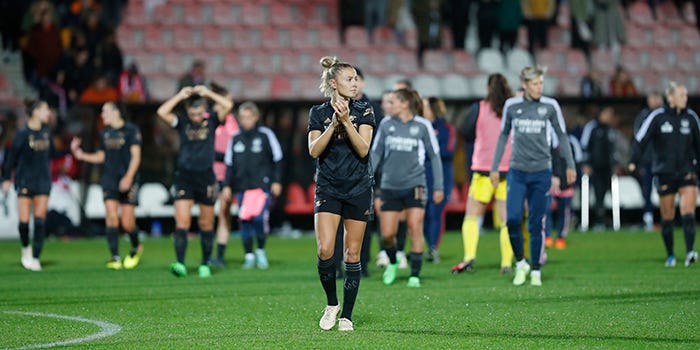
Game state has played a part too, Liverpool and Aston Villa took the lead against Arsenal and Bristol City equalised. All of those teams had something tangible to hold onto through a mixture of bad defending and a little bad luck (Arsenal have conceded five goals from 2.8 XG this season). I don’t think a counterpressing style is not suited to playing deep blocks, per se. Liverpool under Klopp, for example, never really seemed to struggle in that scenario.
The high-pressure strategy isn’t just about what you do when opponents have the ball, it’s not just about winning the ball back. It is about being positioned high up the pitch so that you can sustain pressure on opponents so, if they clear the ball, you get it straight back and keep them under pressure. It’s not that Eidevall’s style isn’t effective against deep block defences, it’s that Arsenal haven’t executed it well enough.
As for the wording in Adina’s question, it’s not that Arsenal are deliberately ignoring the centre of the pitch, it’s a mixture of them being forced out wide and that lack of chemistry in central spaces. I asked Jonas about this before the Bristol City game and he admitted there had been too many speculative crosses against Liverpool and Villa. His thinking was more that, if you are being forced out wide, make sure you make good decisions in those areas.
Because when you do that, the opponent has to go out there to meet you and that opens up space centrally. You see that with both goals against Aston Villa. After a real lull in attacking play at the beginning of the second half, Arsenal did a much better job of penning Villa in in the last 30 minutes or so, they made better decisions out wide and both goals come from Villa’s defenders moving around out of their positions. I don’t think it’s a structural or style issue, I think it’s a fine tuning issue.
Clive B
I feel that some of Arsenal's best runs of good performance over the previous seasons have come when, through injury crises, we have been forced to play a fairly settled starting eleven. Playing the same team each week means there is a growing chemistry between players which leads to a stronger defense and more effective attack. This season we are lucky to have a large number of players available to play but are we losing that chemistry between players by rotating too many players between games? Are the constant tactical switches and personnel changes confusing the players on the pitch?
This, to my mind, is Jonas’ biggest challenge this season, rotating effectively. In his first season he didn’t rotate because he didn’t have enough trusted players. Last season, he couldn’t rotate due to injuries. I think there have been good signs this season, the way he set Arsenal up against Manchester United to counter attack was really excellent and would have worked incredibly well had it not been for two very basic defensive errors. But you are right that it has also cost Arsenal some cohesion.
When I look at Emma Hayes’ Chelsea, I think their biggest strength is their ability to rotate plug and play players, but it took them years to get to that point. Honestly, I think this season might see Arsenal learning how to leap onto that Lilypad. I think a real sign of progress would be if Arsenal had very minimal turnover next summer with few incomings and outgoings. I think effective rotation is the next phase of the ‘Jonas project’ as it were and whether he can do it will be a big KPI.
Damian McBride
Is Frida now stuck in a vicious circle? Not in the first XI because she's trying to do it all herself, but trying to do it all herself even more when she comes on as sub to try and get back in the first XI. She was driving the team for much of last season but, as a result, she can't seem to get back to being a cog in the wheel now.
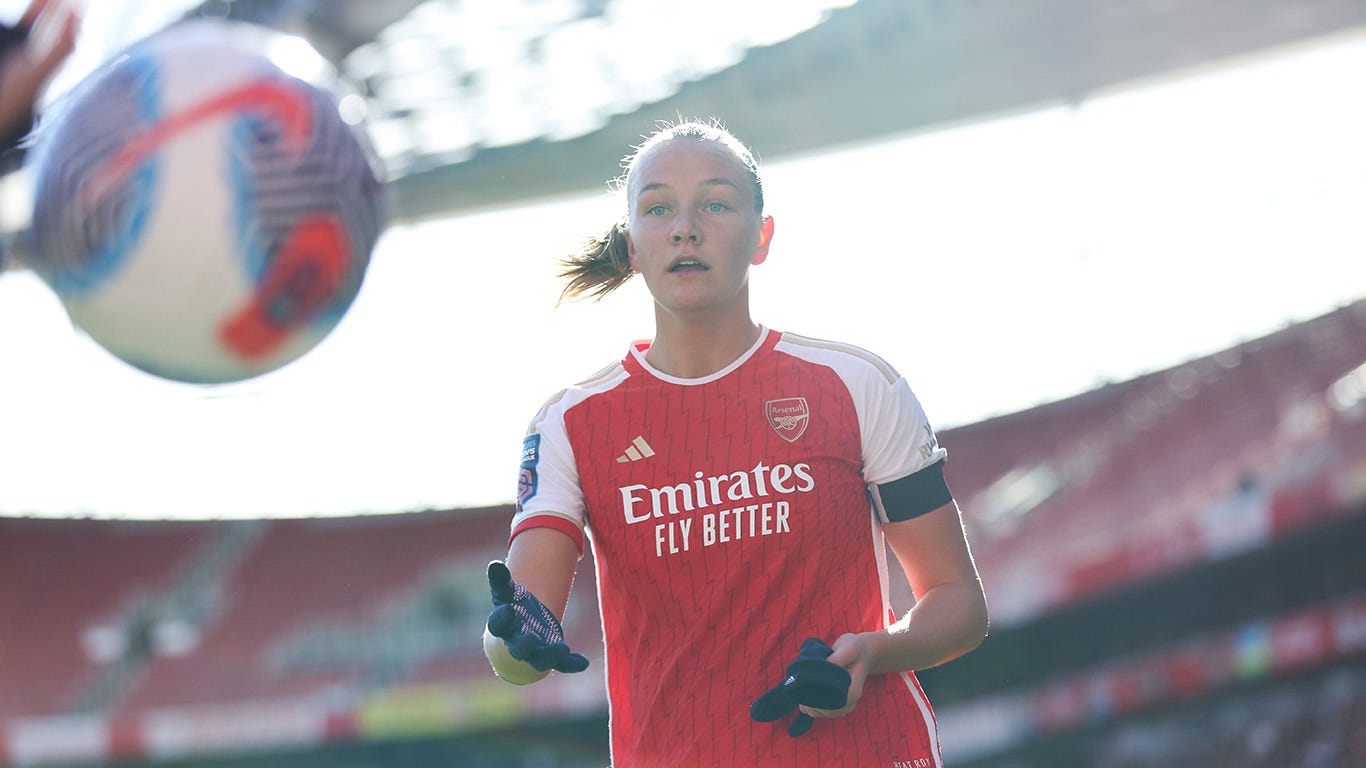
I think Frida suffered in the box midfield formation because it forces her into wider areas. I also think, fundamentally, she has been receiving the ball with her back to goal too often which isn’t her strength. Frida is a strong second phase player and we were getting her in first phase situations, where her decision making needs to be sharpened up. I am not worried about her at all in the long-term. Again, I think it’s a tuning issue more than anything. She is, I think, more victim than cause of Arsenal’s lack of chemistry in central areas. However, when you are a contender for Player of the Season, opponents will look at you more closely and she will have to adapt to that too.
Paul Holmes
Why do you think this season has seen such a change of tactical approach by obsessing with crossing? Is it largely because Russo is so good in the air? Do you think Miedema’s return will see a change to playing more through the middle?
I don’t see it as a change, Arsenal have never, for example, inverted full-backs under Jonas. He has always liked them to overlap because when you play defensive teams, as Arsenal often do, the space is in wider areas. Matt Beard articulated it well when he described Arsenal as a team that looks to go wide so they can come central again. But clearly, the reintroduction of Miedema will give Arsenal a little bit of the guile they have been missing. Frida, for her qualities, is not really a pass picker. She doesn’t pick the lock she smashes the door down and Arsenal could have done with more picking of the lock in recent games.
But I think Williamson is an even bigger miss that Miedema when it comes to Arsenal in central spaces. Is there a better passing centre-half in the world? You lose her, you lose something in the centre of the pitch and it really is that simple. Eidevall talked about this earlier in the season too, about how you can’t just go and buy another Williamson to replace her because there are only two to three like that in the world. I think that is having the biggest impact on Arsenal’s central play but I do see the return of Mead and Miedema, who have a very established chemistry, as a salve.
Jeremy Cunnington
With another tedious international break ahead of us, how long do you think it will be before the football calendar is reformed to fit in with the European club's liking, ie greater focus on club football? IE when will they have the financial heft to tell the associations / UEFA to do as the clubs wish as happens in the men's game? Already saw them trying to do it over the releases of players for the World Cup but with the WSL deal involving cash and DAZN getting behind the UWCL it seems a matter of time. Additionally how long before the expand the WSL with the growth of attendances etc?
This will be a battle ground of the future, for sure. Especially if we get a Women’s Club World Cup which I think is quite likely (and makes sense due to the strength of the NWSL in particular). At the moment, the club game is not quite profitable enough to have this fight now, though, of course, you can see it stirring already in the disputes with the England National Team before the World Cup about when players were released for pre-tournament training camps. For now, I think the arguments will be player focused.
The next “cycle” will be 2025 until 2028 and I don’t see much changing with the weighting between international and club football there. It is worth remembering that the vast majority of the women’s game is still semi-professional in the majority of FIFA territories and international football will remain important for players and their remuneration for the foreseeable future. International football still drives interest in the game too, but once we have an expanded Champions League, maybe a Club World Cup and once those tournaments start to turn over profit, I think this will become a growing argument.
I think the next battleground might also be with regards to the Olympics, which is, in spirit, about showcasing amateur or minority sports and women’s football seems to be moving away from that space. Players still want to compete in the Olympics but someone is going to have to give something up at some point and a cycle with three tournaments every four summers doesn’t feel sustainable to me.
Anya @ FWF
Are Wälti and Little working well enough together in the midfield to warrant their starting spots in said positions? I'd be curious to see what it would be like to swap Pelova in for one of them - barring the Villa game where it felt like they were both all over the place, it has felt like at least one of the two has been "turned off" at any given moment.
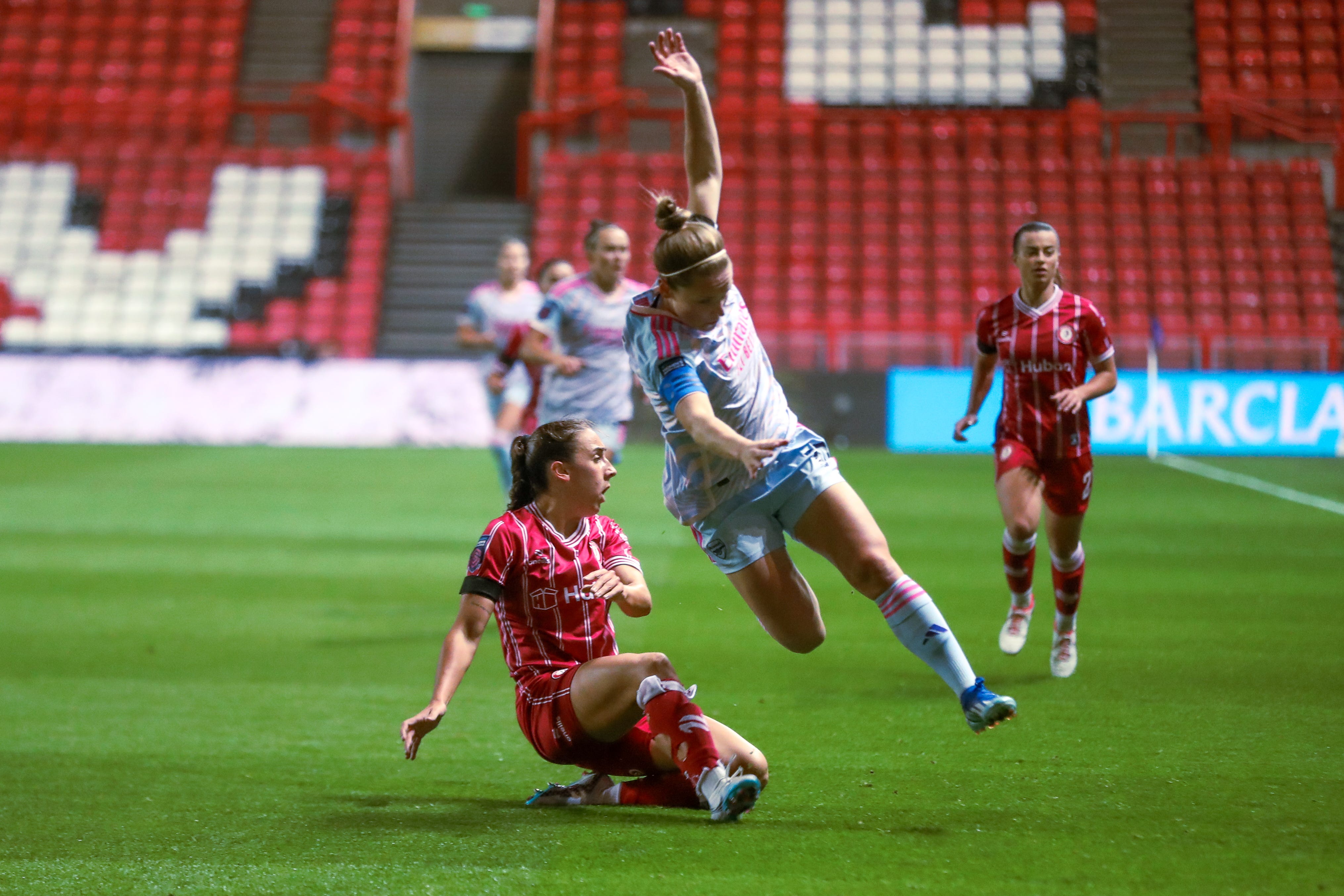
Again, I think this is a symptom of what is going on around them, where there are changing centre-half partnerships with new players and two different formations. Little, Pelova and Maanum have all played the number 10 position, Kim has also played wide. I think the stability the Little Walti pairing provide is very important- especially Walti’s passing from deep which is incredibly underrated and has allowed attacking players like Maanum and Miedema to play ahead of them.
I think the chopping and changing in the spine of the team is why we haven’t seen much of Cooney-Cross and Kuhl yet, that is a tacit acknowledgment that things aren’t settled enough yet to introduce them into the team. I do like Pelova there though and I think she is knocking on that door very hard. But Little and Walti have really only played in a double pivot together twice so I think it’s too early to diagnose an issue there.
Amy @acm9504
Do you think Stina and Russo will start together more as the season goes on? We've looked strong going forward when they've been on the pitch together against United and Villa. Stina makes the runs that are missing to get on the end of the passes Russo plays when she drops deeper.
Yes, I would like to see this from the start in a game soon. Russo keeps the ball and turns so well in those slightly deeper areas but it robs Arsenal of penalty area presence when she does. I would really like to see a game where Russo plays behind Stina, perhaps when Arsenal play Brighton or Leicester. I think it is absolutely an option that we can explore, from the start and from the bench. Mainly I see it as an option from the bench but, while Miedema is still getting back to full fitness, I would love to see us try it from the start.
Janna @jannadw_
Katie has been our most important player this season even though she’s played out of position. You’re not going to get the best out of her on the right, so shouldn’t we find a way to play her on the left? Don’t think Foord and Catley have been that convincing too.
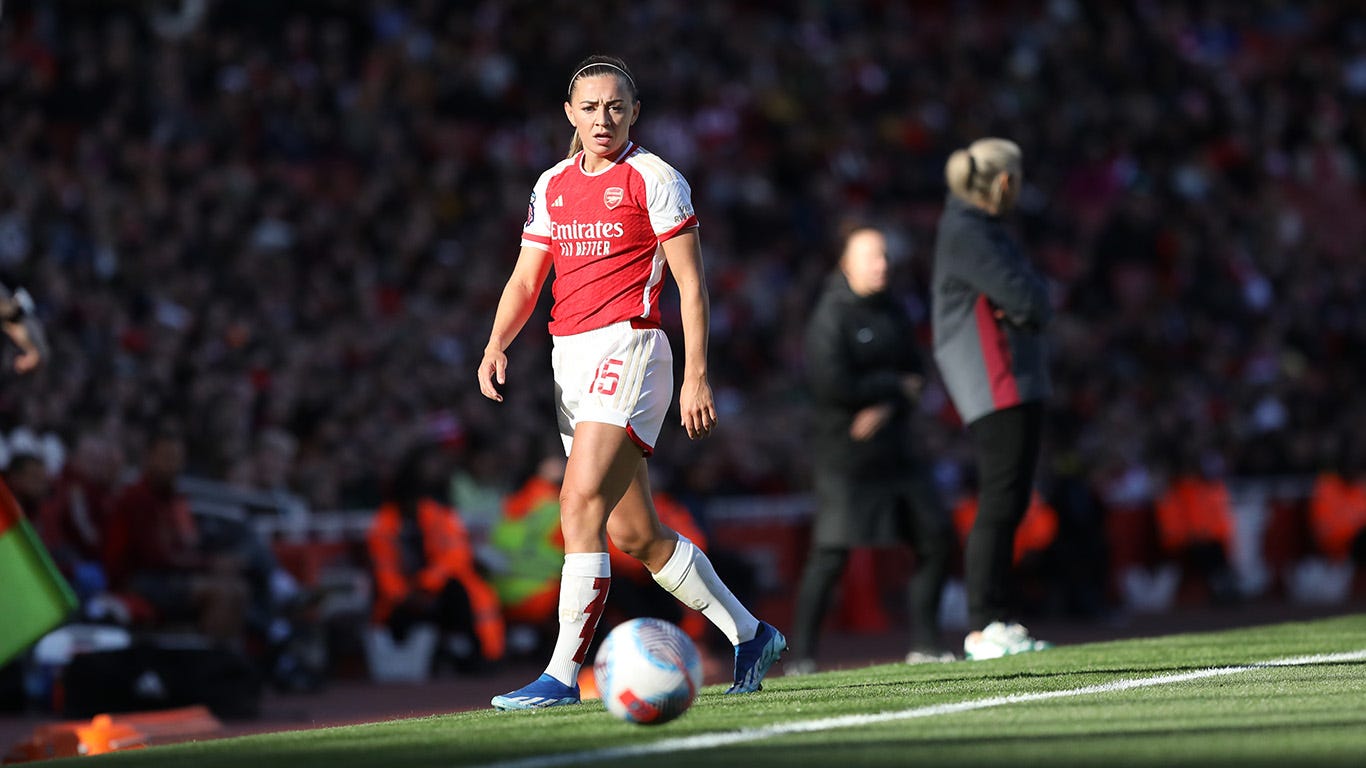
I suspect there is some World Cup hangover for Foord and Catley though the latter has shifted around between centre-back and left-back quite a lot. I have been told by more than one person that Jonas basically just wants McCabe on the pitch by hook or by crook (and you can appreciate why). I suspect we will see her at left-back and on the left wing in upcoming games. There might be a question further down the line about whether she gets a more settled spot in the team but I don’t think we are there yet and it is immensely to her credit that she can operate so effectively in so many positions. If Arsenal weren’t absolutely stacked in central midfield I think she could play there just as well as anywhere else. There are few spots in the team that are safe from competition from Katie.
TDB @TDB1726
What's this about a diversity issue in the team?
Arsenal Women has no WOC (at least visibly*) in their current first team squad. This is especially disappointing given their history with legends like Rachel Yankey, Alex Scott, Anita Asante, Lianne Sanderson and Mary Philip. I am putting together a long read on this for Arseblog News, taking into account a number of views and explanations, so I don’t want to go too in depth here. But this is a wider problem in women’s football in the UK where grassroots recruitment has been very biased towards suburban areas, allied to the fact that Arsenal recruit heavily from Scandinavia and Australia, where the make up of women’s players is largely White.
At the risk of making excuses, Arsenal have tried to sign Geyse and Temwa Chawinga in recent summers without success and the U21 side does look more representative racially (from a low bar, obviously). Everton also has no visible WOC in their first team squad and the number of WOC in the England team has dropped enormously in the last decade, a lot of this is due to closures of girls regional talent centres in more inner-city areas. I suspect the issues with former England coach Mark Sampson (who was accused of making a series of racially insensitive comments to Black and Mixed Race England players) did not help when it comes to young Black and Asian girls feeling like football is a welcoming environment for them.
*I am using the term ‘visibly’ because some players may be mixed race in ways that are not immediately detectable.
lpg @onetwopost
Does loaning our academy players to championship clubs really prepare them for the rigours of the Arsenal 1st team? How can we improve their pathway or is just a case of if you're good enough you'll make it?
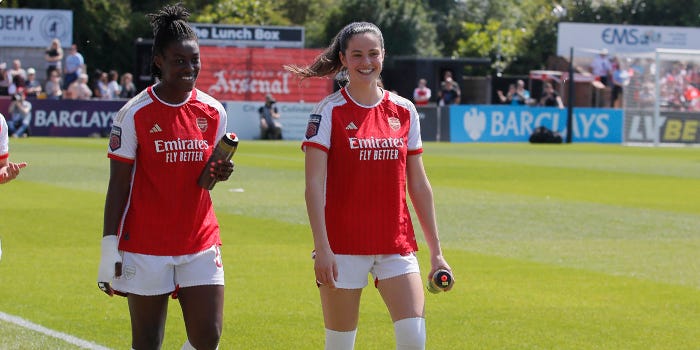
I think at the age of 17 or 18 this is largely fine and there are other factors to consider too. Like the fact that the Championship has a good weighting of London teams which allows players to go on loan without leaving home or their studies. You will notice that Arsenal largely loan players to teams like Crystal Palace, Watford and Charlton for that reason and have loaned players to Spurs and West Ham too.
If those loan players are to make it at Arsenal, they will likely have a second loan in the WSL. Grace Clinton is a good example here, last season Manchester United loaned her to Bristol City, this season she is on loan at Tottenham (Spurs actually wanted Gio on loan this summer before they went for Clinton).
For instance, someone like Michelle Agyemang will go to Watford for now. Next season, fitness permitting, I would expect her to go on loan to either a Championship promotion chaser or a team in the bottom half of the WSL. For what it is worth, I believe that Leah Williamson was slated to join Donny Belles on loan in her late teens but the move was scuppered by a knee injury. (I might have misremembered that but I am pretty sure that’s right). But ultimately, most academy products just won’t make it through and there aren’t enough clubs in the pyramid yet for a foolproof loan strategy.
Thanks for reading Arseblog News - Arsenal Women Newsletter! Subscribe for free to receive new posts and support my work.

